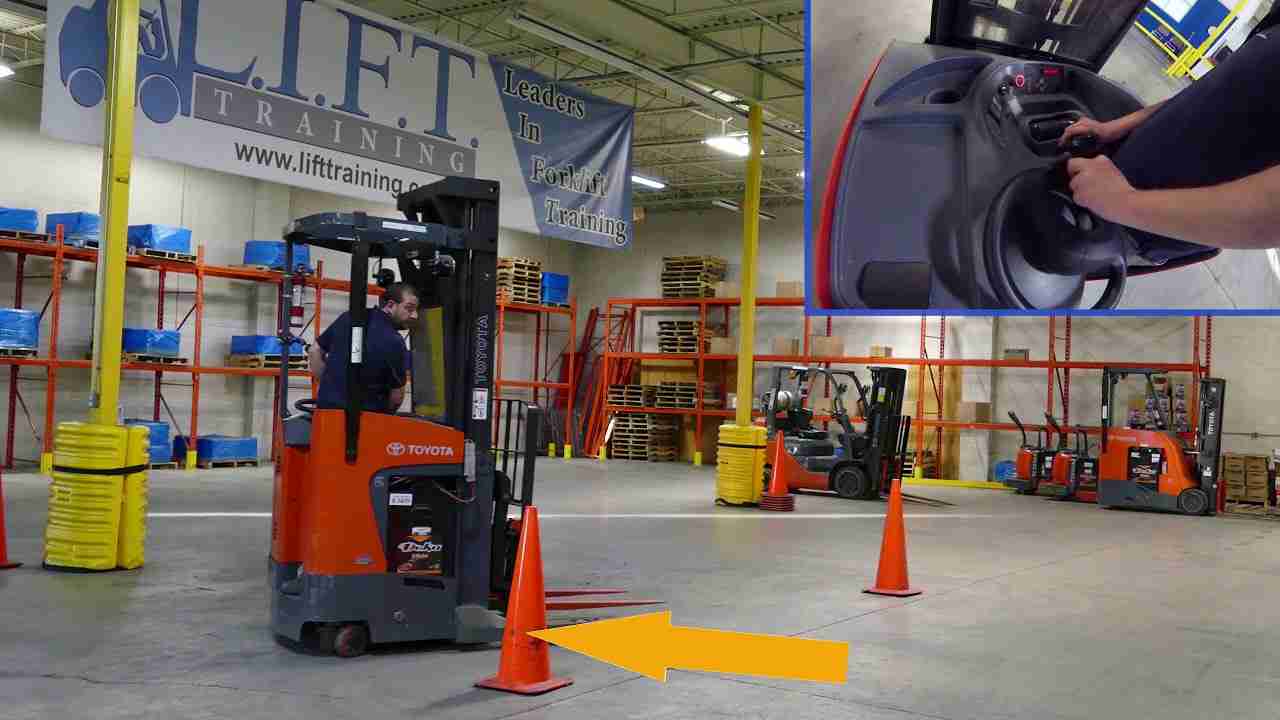
Reach forklifts are indispensable in warehouse and distribution settings, where they provide the capability to lift and maneuver loads at height with precision. However, operating these machines requires skill and expertise to ensure efficiency and safety. Reach forklift training is designed to equip operators with the necessary knowledge and skills to master the operation of these specialized vehicles. This comprehensive guide explores the essentials of Reach forklift training, from its importance to what it entails.
Understanding Reach Forklifts:
Before delving into training courses, it’s crucial to understand the basics of reaching forklifts. These machines are characterized by their extendable mast, which enables them to reach heights that traditional forklifts cannot. Reach forklifts are designed for use in narrow aisles and confined spaces, making them ideal for warehouse environments where space is limited. Their ability to extend both horizontally and vertically allows for efficient stacking and retrieval of palletized loads.
Why Reach Forklift Training is Important:
Operating a reach forklift requires specialized skills due to the unique challenges associated with working at height and in confined spaces. Without proper training, operators may struggle to maneuver the vehicle safely, leading to accidents and damage to goods or equipment. Reach forklift training is essential to ensure that operators understand the principles of safe operation, including load handling, stability, and hazard awareness. By mastering the essentials of reach forklift operation, operators can maximize efficiency while minimizing risks in the workplace.
Components of Reach forklift training:
Reach forklift training typically covers a range of topics to provide operators with a comprehensive understanding of the vehicle and its operation. Here are some key components commonly included in these courses:
Classroom Instruction:
The training begins with classroom instruction, where participants learn about the theoretical aspects of reach forklift operation. Topics may include safety regulations, equipment familiarization, load capacity, and maneuvering techniques. Experienced instructors provide valuable insights and facilitate discussions to ensure that participants grasp the fundamental principles of safe operation.
Practical Training:
Hands-on practical training is a crucial aspect of reach forklift courses, allowing participants to apply theoretical knowledge in a real-world setting. Under the guidance of instructors, operators practice essential maneuvers such as stacking, retrieving, and navigating tight spaces. Practical training sessions provide operators with the opportunity to develop their skills and confidence in operating the reach forklift safely and efficiently.
Skills Assessment:
After the training, participants undergo a skills assessment to evaluate their competency in reach forklift operation. This assessment typically involves demonstrating proficiency in various tasks, including load handling, stacking, and maneuvering in confined spaces. Operators must showcase their ability to operate the reach forklift safely and efficiently under different conditions.
Certification:
Upon successful completion of the training and assessment, participants receive a certification or license recognizing their qualification as a reach forklift operator. This certification serves as proof of competency and is often required by employers and regulatory authorities. Renewal may be necessary periodically to ensure operators stay up-to-date with safety standards and best practices.
Choosing the Right Training Provider:
When selecting a reach forklift training course, it’s essential to choose a reputable and accredited provider. Consider the following factors:
Accreditation:
Ensure that the training provider is accredited by relevant industry bodies or regulatory agencies. Accredited courses meet established standards for quality and compliance, giving you confidence in the training’s effectiveness.
Experienced Instructors:
Look for courses led by experienced instructors with a thorough understanding of reach forklift operations. Experienced instructors can provide valuable insights and guidance to participants throughout the training process.
Comprehensive Curriculum:
Evaluate the course curriculum to ensure it covers all necessary topics comprehensively. A well-rounded curriculum should include both theoretical instruction and practical training to equip operators with the knowledge and skills they need.
Flexible Training Options:
Choose a training provider that offers flexible scheduling options to accommodate your needs. Whether you prefer in-person classes or online training, opt for a provider that offers convenient options to fit your schedule.
Final Thoughts:
Reach forklift training is essential for anyone tasked with operating these specialized vehicles. By undergoing comprehensive training, operators can ensure workplace safety, minimize risks, and maximize efficiency. When choosing a training provider, prioritize accreditation, experienced instructors, a comprehensive curriculum, and flexible options. Investing in quality training is not only a legal requirement but also a commitment to safety and professionalism in the workplace.